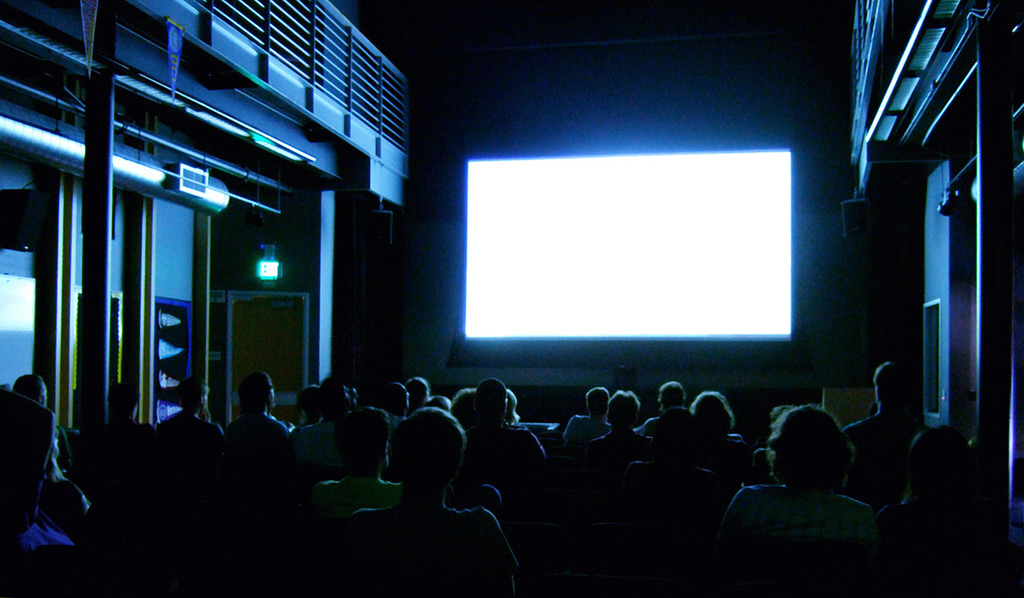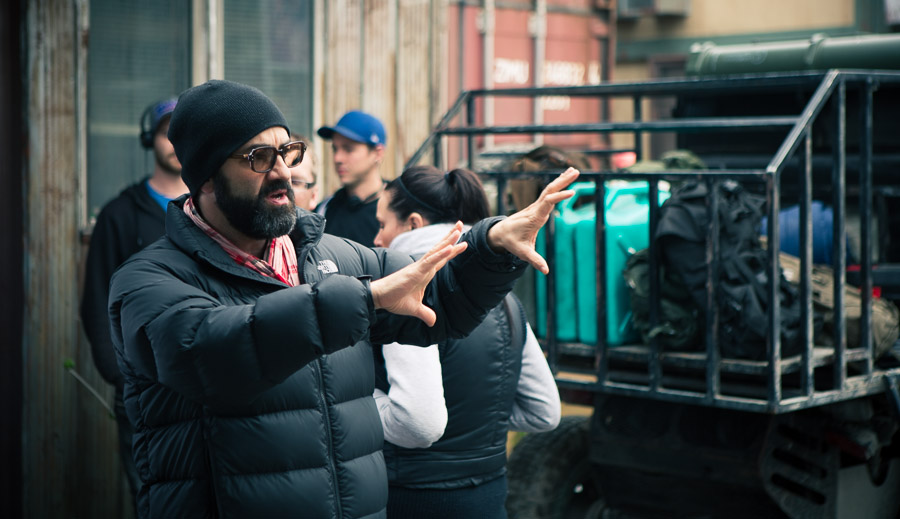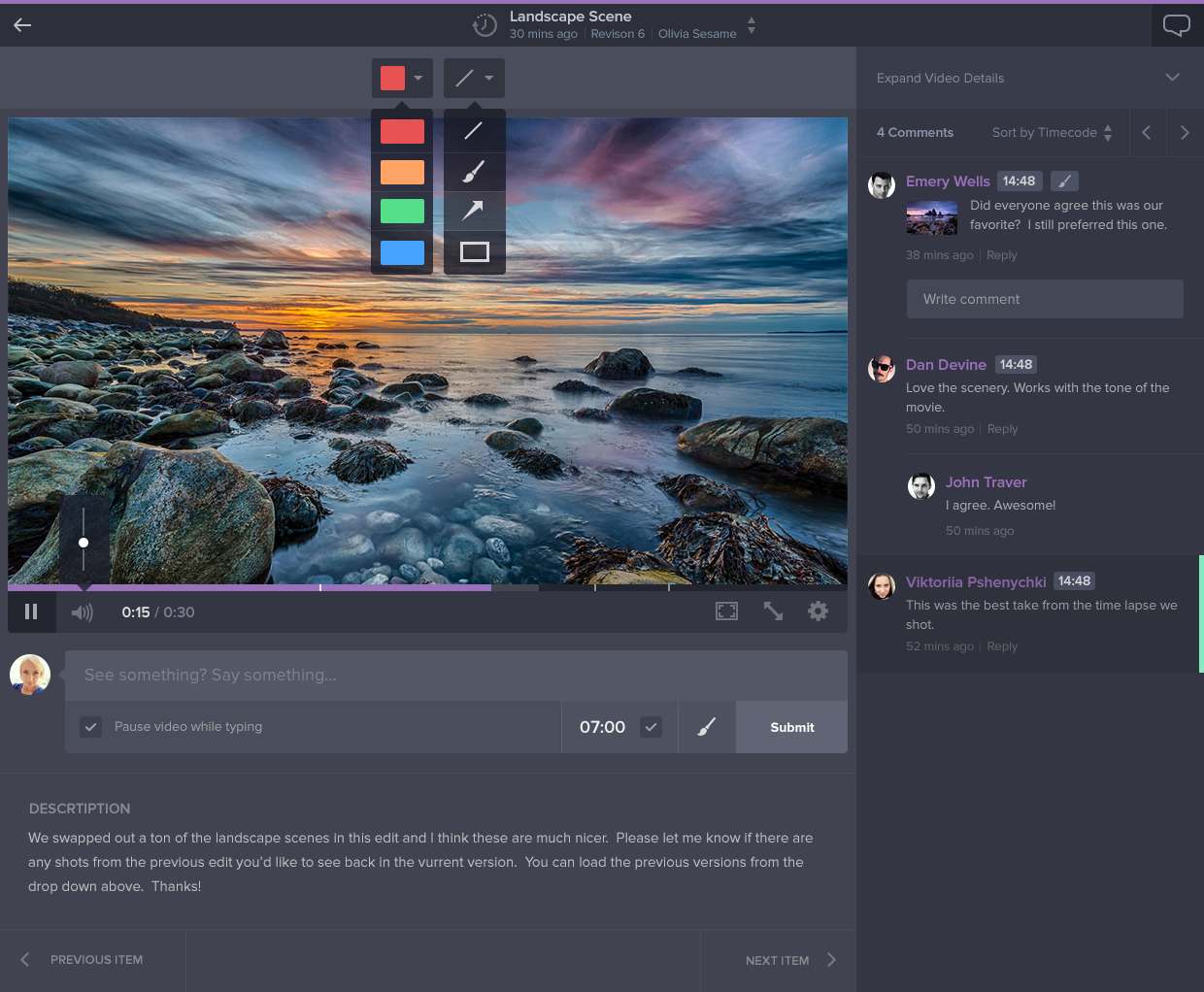 Photo by Kenneth Lu
Photo by Kenneth Lu
“The most important thing in art is The Frame. For painting: literally; for other arts: figuratively—because, without this humble appliance, you can’t know where The Art stops and The Real World begins. You have to put a ‘box’ around it because otherwise, what is that shit on the wall?”
– Frank Zappa
At this year’s CinemaCon, projector maker Barco has revealed “Escape,” a projection system that adds screens to the sides of an otherwise ordinary movie theater. Ted Schilowitz, formerly of Red Digital Cinema, demoed the system for me a few weeks ago. Here’s what he told Variety:
“The goal is to provide a bigger, more intense, more encompassing canvas,” Schilowitz says, “to extend the boundaries of cinema, to open the possibilities of what happens when you break out of the rectangle.”
If you can’t make it to CinemaCon, just check out the photo accompanying the Variety story. That’s exactly what it looks like in person. The side screens stick flat to the walls, and can show whatever the filmmaker chooses, from naturalistic periphery to juxtaposed imagery.
Dome on the Range
Growing up in Minnesota, my parents didn’t take my brother and I to theme parks much. We preferred the Science Museum of Minnesota, with its interactive exhibits, and, most memorably, its combination planetarium and Omnimax theater.
Omnimax is a special kind of IMAX that uses a domed screen. You shoot on the same 65mm, 15-perf cameras as IMAX, but with a special off-center fisheye lens. A similar fisheye lens on the projector throws the image onto the 180-degree domed screen. And it’s a big dome—just walking into an Omnimax theater is an experience.
We’d gleefully soak up a rather dry documentary about the Grand Canyon, because each new scene would be established with a helicopter shot racing down the Colorado River. Below you, white water. To either side, craggy rock walls racing by. Above you, clear blue sky—and even a glimpse of the helicopter’s whirling rotor.
It was like flying.
An Omnimax movie is much more of a ride than a film. In fact, one of the most popular Omnimax theaters isn’t even billed as a theater—it’s the “Soarin’ Over California” ride at Disney’s California Adventure park. Adding suspended seats and scented wind to an Omnimax film feels as natural as popcorn in a traditional movie theater.
At its best, the experience of Barco’s Escape felt a little like Omnimax, but with some notable technical issues yet to be resolved. In an Omnimax theater, it takes you a minute or two to get used to the distortion of the image—if you’re not siting near the center of the theater. In the prototype Escape setup I experienced, I never quite got used to the way peripheral images played on the side screens. Horizons kinked at the large seams, and I was often more distracted than immersed. There was no “sweet spot.”
Between Escape and all the excitement around the Oculus Rift virtual reality headset, it seems clear that some in the cinema world feel the natural next step for movies is to break free from the confines of the rectangular screen. Maybe 3D flopped (for a third time) because objects leaping out of the frame wasn’t “immersive” enough. Maybe the problem is the frame itself.
Sauce for a Steak
 My brother-in-law makes the best steak.
My brother-in-law makes the best steak.
Making good movies is hard. But when it’s done well, there’s nothing like it. I cry at movies. I cry three times in Finding Nemo, like clockwork. I cry at I Love You Man.
When that happens, I am immersed. There’s nothing better. The desire to create that experience for others is what drives everything I do professionally.
Filmmakers fail often in their attempts to immerse their audiences with character and drama, and those failures are expensive. So I understand the impulse to reach for a more concrete, reliable way to captivate the audience. Technicians love movies too. It’s only natural that they should try to use what they know to make the experience more immersive.
But the problem with these attempts is that they run contrary to the very fundament of filmmaking. They undermine precisely what is so effective about cinema.
Nothing about cinema is real. It’s all gloriously, magically fake. Acting is fake. Lighting is fake. Sets, concepts, levels of attractiveness and charisma, ease of parking, thematic relevance of small details, amount of lipstick on the leading man’s face after a kiss—all fake. Once one aspect of the experience breaks rank from that dream-like unreality—say, by going 3D, or increasing the frame rate, the experience becomes disjointed and uncomfortable. The edges of the frame are sometimes distracting in even a great 3D movie like Gravity. The high-frame-rate version of The Hobbit made daylight exteriors look tantalizingly real, but revealed lit interior sets for exactly what they were.
Go into a great steak restaurant and ask for steak sauce. See what kind of looks you get. Adding “reality” to cinema is like putting hot fudge on a steak. It’s the wrong sauce for a dish that, when prepared well, needs no embellishments.
Framing is Authoring
 Scott Stewart directing the pilot of Defiance for Syfy
Scott Stewart directing the pilot of Defiance for Syfy
An event happening in a room is reality. When you put a box around it, it becomes storytelling. The conceit of the frame is what makes cinema possible. Yes, it makes composition possible—a pleasing arrangement within the frame, but more importantly, it makes a cinematic voice possible. Removing the “limitation” of the frame is actually removing the storyteller’s most important tool—the ability to show us exactly and only what matters. The ability to tell the story, rather than merely present it.
Movies Are Broken
I’ve said in the past that movies aren’t broken, but that’s not entirely true. Movies don’t need any technical fixing, but they are a bit broken. Schilowitz may be right that “if cinema stands still, it will lose,” but what cinema is losing to in my household is not roller-coaster experiences in a theater, it’s TV shows with complex, captivating characters, adult content and themes, and zero risk of not having a good time. I’ve still yet to convince my wife to watch a few of last year’s well-reviewed three-hour movies with me, but we’ll happily plow through three episodes of House of Cards in a night.
We watch it on a big, rectangular screen. We’re captivated by it. Immersed. And never once do we turn to each other and ask, “I wonder what’s just outside the frame?”
If movies want to compete with TV, putting extra stuff on the edges of the screen isn’t going to do it. They’re going to have to put better stuff in the middle.
They’re going to have to learn to make a steak as good as Game of Thrones, or True Detective.
A Place for More
So is Escape worthless? No, nor is Omnimax, or virtual reality, or any other “experience” that may borrow some tools of cinema to work its magic. I loved those Omnimax films as a kid, but they didn’t make me love movies any less. They were something else entirely.
There is a place for these non-cinematic, kinetic experiences. I’ve seen some pretty cool stuff lately behind closed doors, and I’m excited about the experience—and even storytelling—possibilities of these new platforms. They’re not movies, but they can be pretty cool.
See, I love ice cream. And I love it more with hot fudge on top. So keep doing what you do, saucemakers. But leave my steak alone—and leave us steakmakers to the worthy challenge of making a steak so good, you’d never dream of saucing it up.
 Tuesday, July 15, 2014 at 9:38AM
Tuesday, July 15, 2014 at 9:38AM 












